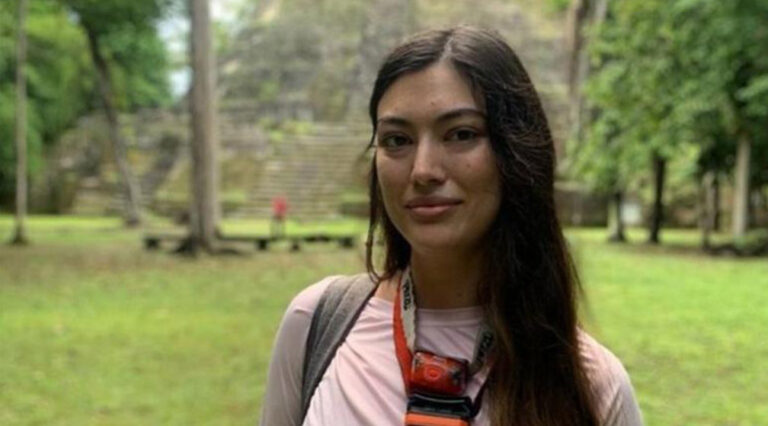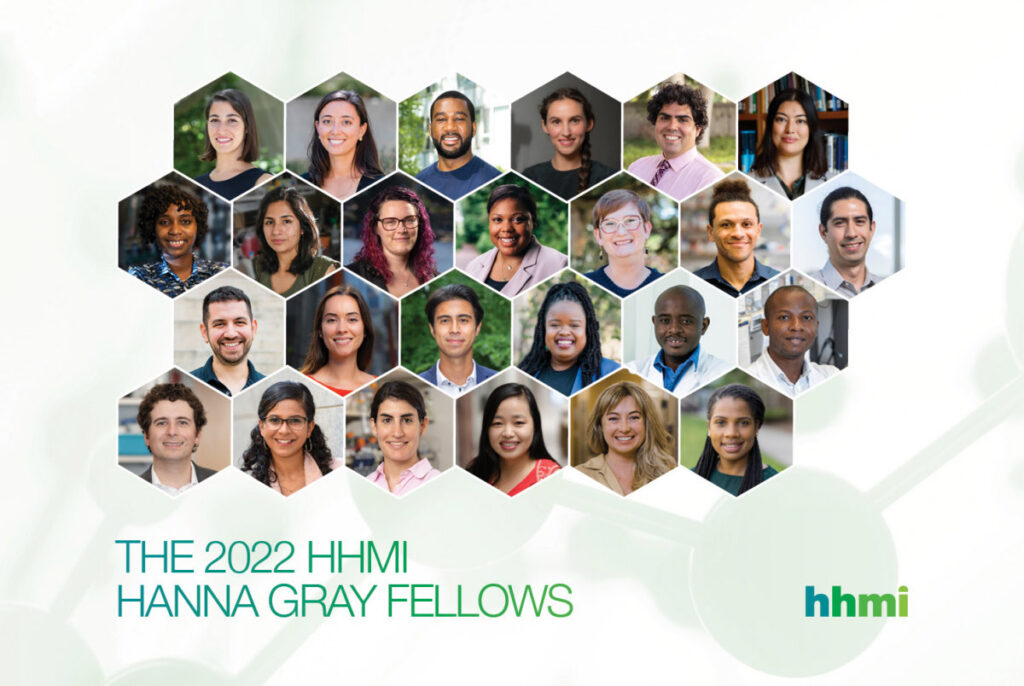News
15 April 2025
Light sheet microscopy: A decade-long journey from DIY innovation to cutting-edge imaging
A look at the technology that provides researchers with deeper insights into complex biological systems.
Read Article
News
Jasmin Camacho, PhD, a postdoctoral researcher at the Stowers Institute received coveted Hanna H. Gray Fellow award from the Howard Hughes Medical Institute.

Jasmin Camacho, PhD, receives prestigous HHMI Hanna H. Gray Fellows award
Stowers Institute Postdoctoral Researcher, Jasmin Camacho, PhD, recently received one of the most prestigious honors granted to early-career scientists. Camacho, who conducts research in the lab of Nicolas Rohner, PhD, was named one of 25 new Howard Hughes Medical Institute (HHMI) Hanna H. Gray Fellows.
The award recipients represent a promising and more diverse future for biomedical science. Fellows will receive funding for their postdoctoral training and may continue to receive funding during their early career years as independent faculty.
“This award supports my postdoc and the faculty phase, so I can be a bit more adventurous now with my project. My funding will be used to generate stem cell-based models of metabolic tissues and processes,” Camacho said.
In total, fellows may receive up to $1.4 million each and be supported for up to eight years.
Camacho, who has a strong background in cellular and molecular biology, focuses her research at Stowers around the study of bats. Specifically, she is looking at how their metabolism adapts to accommodate a high volume of sugar while remaining healthy.
“This funding will help as we try to make an embryo model called an embryoid, because development allows us to see in real-time what it takes to create an extreme mammalian body and brings us closer to understanding anatomy, physiology, and how evolution works,” she explained.
Camacho earned an undergraduate degree at the University of California, Davis. It was at UC Davis where she was inspired to pursue a career in evolutionary and developmental biology after training with Verónica Martínez Cerdeño, PhD, in cortical evolution. She then went on to earn her Ph.D. from Harvard University with mentorship from Cliff Tabin, PhD, and Arkhat Abzhanov, PhD.
The Hanna H. Gray Fellows Program is named after Hanna Holborn Gray, former chair of the HHMI board of trustees and former president of the University of Chicago. Under Gray’s leadership, HHMI developed initiatives that foster diversity and inclusion in science education. HHMI continues to carry forward this work on college and university campuses across the United States.
Camacho explained this award is one of the most important honors of her career thus far.
“It is an honor to be following in the footsteps of Hanna H. Gray, one of the many women I have admired. She was fearless and did not follow social norms (i.e., walking through the front door for faculty meetings at a time it was not allowed in the 50’s). As a first-generation college graduate, coming from very humble beginnings, I always dreamed of someday feeling free enough to follow my heart and my love for nature. As a Fellow, I now have a clearer path forward to learn more about the hidden wonders of biodiversity, especially from the extreme diversity we see in bats,” she said.
Camacho added that she will never forget the moment she found out she would be named a fellow. She was doing fieldwork in Costa Rica.
Camacho said, “I learned of getting this award by text message! I was in a lowland rainforest in Costa Rica catching bats, so I was without the ability to check emails! The first thing our field team did was jump gleefully with our field pups Copito and Patitas. We celebrated with some ‘pico de gallo’ made by Fiona Reid (naturalist, author, and illustrator of "A Peterson Field Guide to Mammals of North America.”) Every meal/drink in the field from then on out was ‘congratulations!’”

Jasmin Camacho, PhD, is part of the newest class of HHMI Hanna H. Gray Fellows.
“This award supports my postdoc and the faculty phase, so I can be a bit more adventurous now with my project. My funding will be used to generate stem cell-based models of metabolic tissues and processes,” Camacho said.
In total, fellows may receive up to $1.4 million each and be supported for up to eight years.
Camacho, who has a strong background in cellular and molecular biology, focuses her research at Stowers around the study of bats. Specifically, she is looking at how their metabolism adapts to accommodate a high volume of sugar while remaining healthy.
“This funding will help as we try to make an embryo model called an embryoid, because development allows us to see in real-time what it takes to create an extreme mammalian body and brings us closer to understanding anatomy, physiology, and how evolution works,” she explained.
Camacho earned an undergraduate degree at the University of California, Davis. It was at UC Davis where she was inspired to pursue a career in evolutionary and developmental biology after training with Verónica Martínez Cerdeño, PhD, in cortical evolution. She then went on to earn her Ph.D. from Harvard University with mentorship from Cliff Tabin, PhD, and Arkhat Abzhanov, PhD.
The Hanna H. Gray Fellows Program is named after Hanna Holborn Gray, former chair of the HHMI board of trustees and former president of the University of Chicago. Under Gray’s leadership, HHMI developed initiatives that foster diversity and inclusion in science education. HHMI continues to carry forward this work on college and university campuses across the United States.
Camacho explained this award is one of the most important honors of her career thus far.
“It is an honor to be following in the footsteps of Hanna H. Gray, one of the many women I have admired. She was fearless and did not follow social norms (i.e., walking through the front door for faculty meetings at a time it was not allowed in the 50’s). As a first-generation college graduate, coming from very humble beginnings, I always dreamed of someday feeling free enough to follow my heart and my love for nature. As a Fellow, I now have a clearer path forward to learn more about the hidden wonders of biodiversity, especially from the extreme diversity we see in bats,” she said.

Camacho added that she will never forget the moment she found out she would be named a fellow. She was doing fieldwork in Costa Rica.
Camacho said, “I learned of getting this award by text message! I was in a lowland rainforest in Costa Rica catching bats, so I was without the ability to check emails! The first thing our field team did was jump gleefully with our field pups Copito and Patitas. We celebrated with some ‘pico de gallo’ made by Fiona Reid (naturalist, author, and illustrator of "A Peterson Field Guide to Mammals of North America.”) Every meal/drink in the field from then on out was ‘congratulations!’”
News
15 April 2025
A look at the technology that provides researchers with deeper insights into complex biological systems.
Read Article
News
11 April 2025
“There are few rewards as powerful and as elevating as making a clear, robust scientific observation that advances the field.”
Read Article
News

09 April 2025
New study shows how we can better learn our genome’s hidden grammar, potentially paving the way for personalized medicine.
Read Article
